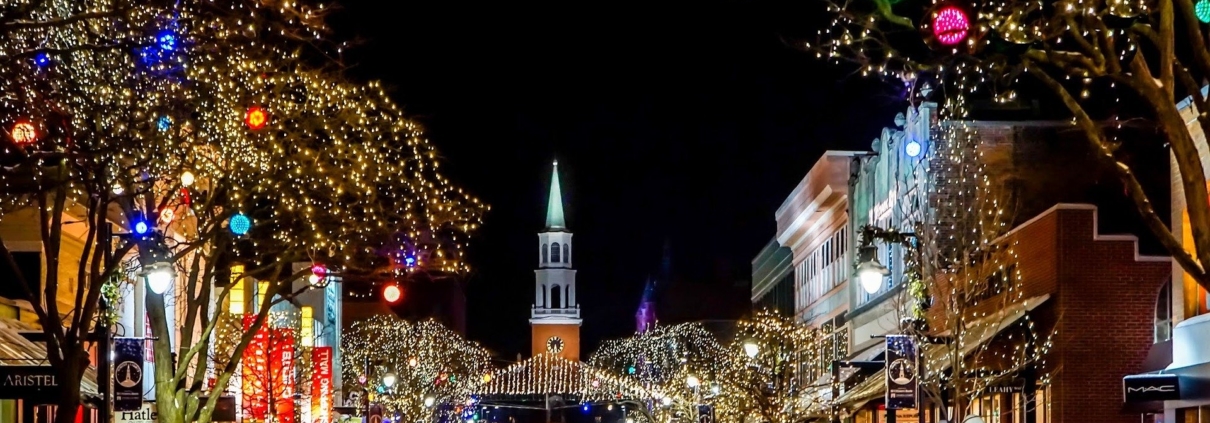¡Feliz Navidad! – How is Christmas celebrated in Mexico?
Apart from Brazil, Mexico is the second largest Catholic country in the world. Likewise, celebration of Christmas in Mexico has a very special meaning and is celebrated broadly. Particularly, the pre-Christmas period – which sometimes begins in the second half of November as many people start decorating their houses at this time of the year with Christmas motifs – is fully enjoyed.
Many traditions and folkways are characteristic of this festivity in Mexico. Amongst the things that cannot be missed at all are the typical Mexican dishes and lavish decorations. When it comes to decoration, Mexicans have a saying: “It is better one more than one short” and what may seem exaggerated and discreetly kitschy for some people, in Mexico is quite normal.
At the same time, Mexican traditions clearly express the religious significance of the event.
The following paragraphs contain a brief description of the most important Christmas traditions in Mexico:
Posadas
The Christmas season official starting date is December 16 when the first Posada takes place (Posada means hostel). The Posadas are a re-enactment of Maria’s and Joseph’s long journey searching for accommodation. Here, two people disguised as Maria and Joseph go from door-to-door asking for shelter, a group of people walk in procession accompanying the couple holding candles and singing Christmas Carols (Villancicos).
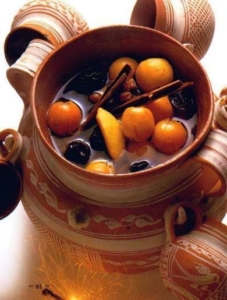 At the destination previously defined; Mary and Joseph (and the rest of the procession) will finally find shelter. Then, the Posada flows into a Fiesta Mexicana with dance, music and typical Mexican Christmas food and drinks, including Buñuelos (fritters), Tamales (tamale), Ponche (fruit punch) and chocolate caliente (hot chocolate).
At the destination previously defined; Mary and Joseph (and the rest of the procession) will finally find shelter. Then, the Posada flows into a Fiesta Mexicana with dance, music and typical Mexican Christmas food and drinks, including Buñuelos (fritters), Tamales (tamale), Ponche (fruit punch) and chocolate caliente (hot chocolate).
After the official start on December 16, Posadas take place almost daily in Mexican cities, villages and families. Posadas end up every time in a different house.
Piñatas
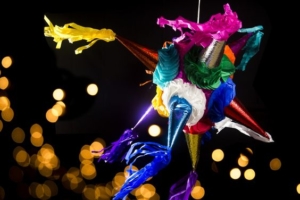 The Piñatas are not only typical of children’s birthday celebrations in Mexico, but also for Christmas. These items play an important role in Mexican Posadas and the Christmas party on Christmas Eve. Those cardboard, crepe paper-wrapped shapes are filled with sweets, toys and even fruit. The 7-tip star shape stands for the traditional Piñata and children try to smash the Piñata using a wooden stick. To make this mission even more challenging, children are blindfolded. When the Piñata cracks all the contents fall down and here… The battle begins!! All the children strive to collect as many sweets as possible.
The Piñatas are not only typical of children’s birthday celebrations in Mexico, but also for Christmas. These items play an important role in Mexican Posadas and the Christmas party on Christmas Eve. Those cardboard, crepe paper-wrapped shapes are filled with sweets, toys and even fruit. The 7-tip star shape stands for the traditional Piñata and children try to smash the Piñata using a wooden stick. To make this mission even more challenging, children are blindfolded. When the Piñata cracks all the contents fall down and here… The battle begins!! All the children strive to collect as many sweets as possible.
Nacimientos
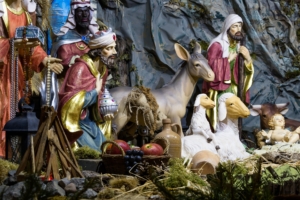 Nativity scenes are called Nacimientos in Mexico. They are much more important that the Christmas Tree, which became part of the Mexican Christmas tradition as a consequence of European influences. The date for setting the Nativity scenes in Mexico is also December 16.
Nativity scenes are called Nacimientos in Mexico. They are much more important that the Christmas Tree, which became part of the Mexican Christmas tradition as a consequence of European influences. The date for setting the Nativity scenes in Mexico is also December 16.
The most important characters in the Nacimiento are Mary and Joseph. Other characters such as farm and stable animals and shepherds are also part of this Nativity scene and the angel guarding the crib. Baby Jesus is laid down on December 24 to symbolize his birth. The Three Wise Men, who are a must in the Nacimientos, join the Nativity on January 5. In order to make the work of building the nativity scenes worthwhile, these scenes usually remain in place until February 2.
Pastorelas
Pastorelas (Nativity Play) are theatrical plays that represent the shepherds’ journey to Bethlehem. They very popular in the Christmas season in Mexico.
 In the plot, shepherds must overcome all hindrances devised by the devil along their way. This can only be achieved with the angel’s help who protect the shepherds all the way until they are able to give away their gifts to the newly born Baby Jesus.
In the plot, shepherds must overcome all hindrances devised by the devil along their way. This can only be achieved with the angel’s help who protect the shepherds all the way until they are able to give away their gifts to the newly born Baby Jesus.
The most popular Pastorelas are performed in the city of Tepotzotlán in the Estado de México (State of Mexico).
December 24: Nochebuena
 Like in many European cultures, Christmas Eve (Nochebuena) in Mexico is typically celebrated with family get-together around the Christmas Tree (which is rarely a real tree, by the way).
Like in many European cultures, Christmas Eve (Nochebuena) in Mexico is typically celebrated with family get-together around the Christmas Tree (which is rarely a real tree, by the way).
Usually, Christmas dinner in Mexico is served very late. Turkey is a typical Christmas meal in Mexico although many families have their own folkways with regard to the festive meal. Presents are unpacked after midnight.
Family luncheons and dinners are also held on December 25 and they tend to be huge leftovers’ meals – what remained the night before is back on the tables the day after.
January 6: The Three Wise Men Day
In Mexico, Christmas does not end on December 25. Same as in Spain, the Three Wise Men Day which is celebrated on January 6 plays an important role in comparison with other Western cultures.
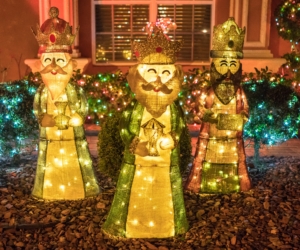 Something particularly pleasing for most children is that hardly two weeks after December 24, more presents come along! According to the original tradition, before Santa Claus’ intervention, the Three Wise Men were the ones in charge of bringing joy and presents on the morning of January 6. Therefore, children in Mexico send their wish lists to the three kings.
Something particularly pleasing for most children is that hardly two weeks after December 24, more presents come along! According to the original tradition, before Santa Claus’ intervention, the Three Wise Men were the ones in charge of bringing joy and presents on the morning of January 6. Therefore, children in Mexico send their wish lists to the three kings.
Another important tradition in this day is the Rosca de Reyes, a ring-shaped pastry topped and garnished with glazed fruit. A tiny figure representing Baby Jesus is hidden inside. Whoever finds the figure inside his/her piece of roll has to invite all the attending guests to celebrate the Día de la Candelaría (Candlemas) 40 days after Christmas, on February 2 to enjoy Tamales.
The Christmas celebration tradition in Mexico is one of many other aspects showing how multi-faceted Mexican culture is. Whether you spend Christmas in Mexico, Germany or in any other country; WMP Mexico Advisors wish you Feliz Navidad and a Happy New Year! If you want to learn more about traditional Mexican festivities, please have a look at our Día de Muertos (Day of the Dead) article or 10 surprising facts about Mexico publication.

